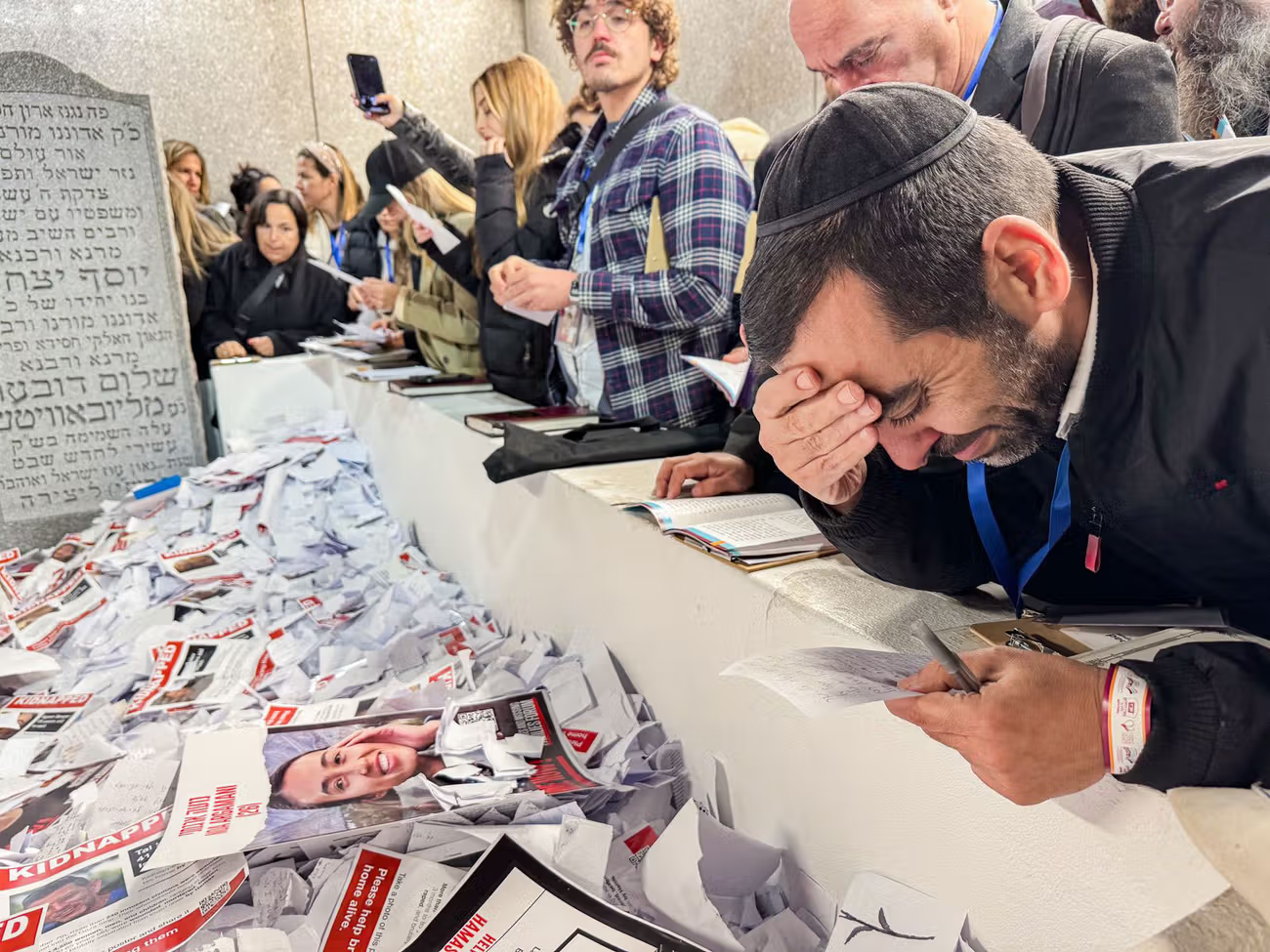 W ZSRR członkowie establishmentu nieufnego wobec ekspertów oraz podwładnych byli nieustannie przepracowani, gdyż ich życie biegło w rytm ciągłych zebrań, na których podejmowali decyzje w setkach często drobnych spraw. Ten sam wzorzec komuniści realizowali w Polsce (Fot. autor nieznany, zbiory Narodowego Archiwum Cyfrowego)
W ZSRR członkowie establishmentu nieufnego wobec ekspertów oraz podwładnych byli nieustannie przepracowani, gdyż ich życie biegło w rytm ciągłych zebrań, na których podejmowali decyzje w setkach często drobnych spraw. Ten sam wzorzec komuniści realizowali w Polsce (Fot. autor nieznany, zbiory Narodowego Archiwum Cyfrowego)
 Komuniści byli przepracowani. Bierut czuwał w nocy przy telefonie, Brystiger prawie nie brała urlopów
Komuniści byli przepracowani. Bierut czuwał w nocy przy telefonie, Brystiger prawie nie brała urlopów
Łukasz Bertram
Wzbieranych przeze mnie relacjach dzieci komunistów i komunistek powtarza się motyw rodziców wiecznie zajętych pracą i nieobecnych w domu.
.
Apogeum władzy
Na jednym z posiedzeń gdańskiego Komitetu Wojewódzkiego padły w latach 50. słowa: „Wszyscy wiemy, że tam, gdzie nas nie ma, dociera wróg – a nas nie ma w wielu miejscach”. Nie wiem, czy słowa te wypowiedział przedwojenny komunista, ale dobrze oddają one głęboko wpojone zasady, które ta formacja próbowała przenieść na cały kraj. Podstawową cechą stalinowskiego porządku było dążenie partii do jak najszerszej i najmocniejszej kontroli nad życiem społecznym. W literaturze często podkreśla się szczegółowość spraw, jakimi zajmowało się najwyższe kierownictwo, które obok określania tempa kolektywizacji i taktyki wobec Kościoła opiniowało np. skład delegacji na międzynarodowy kongres geologiczny. Na każdym szczeblu przekonanie o własnej, dziejowej racji, wizja organizacji jako zbiorowego Mesjasza, wiara w racjonalny porządek przeciwstawiony anarchistycznej żywiołowości spotykały się z „wolą mocy” sekretarza KC oraz sekretarza Komitetu Powiatowego, a także z osobistym interesem w umacnianiu pozycji oraz wpływów. Sprawowanie władzy w stalinowskiej kulturze politycznej kreowało i umacniało dyspozycje polityków do tego, by znać się na wszystkim – albo za takich się uważać lub takich odgrywać. Warto przy tej okazji zastanowić się, w jaki sposób na habitus jednostki wpływa sama możliwość nie tylko wtrącania tysięcy ludzi do więzienia, prześladowania związków wyznaniowych, narzucania pisarzom metody twórczej, lecz także decydowania, który geolog jest godzien wyjazdu ze szczelnie zamkniętego kraju.
To poczucie sprawczości równoważone było nie tylko strachem przed czystką oraz „oporem materii” (nie każde bowiem słowo działacza PZPR stawało się ciałem, bardzo często rozmywało się w kompromisach, grach, interesach itd.). Słusznie konstatowała Hanna Świda-Ziemba, że decydenci w stalinizmie, choć z pozoru dysponujący władzą arbitralną i absolutną, byli zniewoleni przez kształt i treść obowiązującego scenariusza normami posłuszeństwa, dyscypliny i podporządkowania. Do podstawowego rytuału nie tylko plenów, lecz także innych posiedzeń należały hołdy i powoływanie się na enuncjacje kierownictwa jako wcielenie historycznej mądrości i niezawodnego drogowskazu dla partii i narodu/województwa/powiatu. Swoistą metaforą tego porządku było oklaskiwanie przywódców, podczas którego uczestnicy starali się odczytywać ich reakcje, ale również kontrolować się wzajemnie i podsycać swą manifestowaną gorliwość. Uczestnictwo w stalinizmie oznaczało nieustanny trening w krytyce i samokrytyce, posługiwaniu się odpowiednim językiem oraz wychwytywaniu drobnych sygnałów w oficjalnych dyskursach. Równolegle więc z ostatnią fazą awansu społecznego toczyły się procesy ujednolicania komunistów w stalinowskich „ludzi dobrze wychowanych”, wpasowanych w porządek rewolucyjnej biurokracji oraz członków i członkiń nomenklatury.
W zbieranych przeze mnie relacjach dzieci komunistów i komunistek powtarza się motyw rodziców wiecznie zajętych pracą i nieobecnych w domu. Przyczyny były zarówno bardziej subiektywne, jak i obiektywne. Pierwsze z nich odnosiły się do postrzegania swojej pracy jako walki rewolucyjnej, wymagającej takiego samego aktywizmu i oddania jak działalność w podziemiu. Drugie wiązały się z ogromem działań do podjęcia przy budowie nowej Polski, ale przede wszystkim ze stalinowską kulturą organizacyjną.
W ZSRR członkowie establishmentu nieufnego wobec ekspertów oraz podwładnych byli nieustannie przepracowani, gdyż ich życie biegło w rytm ciągłych zebrań, na których podejmowali decyzje w setkach często drobnych spraw.
Ten sam wzorzec komuniści realizowali w Polsce. Nie chodziło tylko o Bieruta dyżurującego do późnej nocy przy telefonie, na który mógł zadzwonić prowadzący taki tryb życia Stalin. Również posiedzenia komitetów wojewódzkich potrafiły kończyć się koło północy.
Pewną osłodę stanowił z kolei system przywilejów, który w pierwszej połowie lat 50. również osiągnął apogeum. Rozwijał się system specjalnego zaopatrzenia (w tym słynne „sklepy za żółtymi firankami”) z dostępem zróżnicowanym w zależności od miejsca w hierarchii władzy. Na wysokiej stopie żyli przede wszystkim członkowie najwęższej elity partyjnej. W sklepach prowadzonych przez Spółdzielnię Pracowników KC PZPR można było znaleźć m.in. obuwie, tkaniny, alkohol, czekoladę, kawę, pomarańcze, artykuły gospodarstwa domowego, galanterię itd. Ludzie władzy mieli również, pospołu z naukowcami, wyższymi urzędnikami oraz wybranymi robotnikami (jak na przykład górnicy dołowi) dostęp do specjalnych przydziałów kartkowych, a także do różnego rodzaju beneficjów nieformalnych, jak szycie ubrań za pół ceny. Wciąż jednak ziała przepaść między komunistą pracującym w lśniącym nowością gmachu PKPG a komunistą zatrudnionym w komitecie powiatowym w Pińczowie: starym, zniszczonym budynku, w którym brakowało nawet podstawowych mebli. Problemem również w sklepach „dla wybranych” były rynkowe braki, konieczność reglamentacji i niska jakość produktów, kiepska infrastruktura, a także oszustwa personelu. Nawet w Warszawie remanenty przeprowadzone w 1953 r. w „nomenklaturowych” placówkach handlowych ujawniły bardzo skromne zapasy.

Mimo to pozycja członków elity w krajach komunistycznych dała asumpt Milovanowi Dilasowi do sformułowania koncepcji wyodrębnienia się „nowej klasy”, politycznej biurokracji kontrolującej środki produkcji i czerpiącej przywileje nie z własności, ale z możliwości administrowania. Położenie ludzi władzy w stalinizmie doskonale oddają też stwierdzenia Moshe Lewina o potężnych poddanych (powerful serfs) oraz klasie rządzącej bez stałości posady. Władza dawała awans społeczny i liczne przywileje materialne, ale wymagała ciągłych wyrzeczeń i oddania. Stalinowska kultura organizacyjna miała janusowe oblicze: z jednej strony, członkowie establishmentu zostali wyniesieni ponad społeczeństwo i wyposażeni w możliwości arbitralnego nim rządzenia, z drugiej zaś – poddani ciągłej niepewności co do swojej pozycji oraz zależni od równie silnej arbitralności i autorytarnych metod stosowanych przez kierownictwo i bezpośrednich zwierzchników. (…)
Uprzywilejowanie
Bierut jako prezydent miał zamieszkać w Zamku Królewskim, już pod koniec lat 40. przewidzianym do odbudowy. Ta idea nie doczekała się realizacji, ale przywódca partii wraz z innymi członkami kierownictwa PZPR dysponował luksusowymi mieszkaniami i willami w zamkniętej strefie w Konstancinie. Różni wysoko postawieni działacze mogli korzystać z partyjnych i rządowych ośrodków wczasowych, specjalnego zaopatrzenia, pokrywania przez państwo rachunków. Skala przywilejów zależała od miejsca w hierarchii, a członków Biura Politycznego dzielił duży odstęp od innych polityków. Członkowie i członkinie EPP [elity partyjno-państwowej] mieszkali na Chopina, Litewskiej, Puławskiej, al. Przyjaciół albo al. Róż, ci zaś mniej znaczący na Grójeckiej, Filtrowej, Polnej albo w al. Niepodległości, niekiedy w fizycznej izolacji od reszty społeczeństwa. Rzecz jasna, bariera ta nie była całkowita: Grudziński, kierownik wydziału KC, mieszkał w trzypokojowym mieszkaniu na Tamce, gdzie nie było żadnej ochrony, a sąsiadami wiceministra Krzyżanowskiego byli ludzie od dyrektora departamentu po kolejarza. Bliscy krewni S. Zawadzkiego byli sklepikarzami czy taksówkarzami, z którymi utrzymywał on normalne, codzienne kontakty. Najbliższa rodzina W. Kowalskiego miała do niego pretensje, że nie powiedział nic o trzymanej do ostatka w tajemnicy wymianie pieniędzy z 1950 r., która również ich uderzyła po kieszeni.
Niektórzy rewolucjoniści, osadzeni wygodnie (na ile było to możliwe w stalinowskich warunkach) na fotelach budowniczych nowej Polski, zatracali dawny zapał na rzecz życiowych przyjemności. „Zawodowy rewolucjonista”, a jednocześnie meloman Wierbłowski zebrał wielką kolekcję płyt. „Legalny-robotnik”, tramwajarz Buczyński, który przez pewien czas pracował na stanowisku dyrektora uzdrowiska, w świetle opinii miejscowych instancji partyjnych traktował je jak swoją własność, „zatracił poczucie rzeczywistości”, zajął dla siebie willę, wyrzucając poprzednich mieszkańców, a jednocześnie związał się z „ludźmi klasowo nam obcymi” i chronił lokalnych „wrogów” po III plenum w 1949 r. Inni wciąż nie omieszkali im takich postaw wytykać, wykazując się szczerą lub manifestowaną pryncypialnością. Łaszewicz, pierwszy sekretarz w Rzeszowie, krytykował wojewodę Rózgę m.in. za to, że „za dużo mówi przy każdej okazji o myślistwie i rybołówstwie” (zapewne chodziło o wędkarstwo). Była to wyraźna zmiana, jeśli zestawić to z pełnymi rewolucyjnego entuzjazmu listami tego „funkcjonariusza” z czasu wojny. Szczególnie że polowania były zajęciem kojarzącym się ze stylem życia przedwojennych elit politycznych i społecznych.

Kole i Treblińska zajmowali duże mieszkanie ze służbówką dla gosposi, chodzili na zamknięte pokazy filmowe w URM i mogli pojechać na wakacje do Warny (po drodze Kole niemal zagubił się w komunistycznej Europie, gdyż wyszedł na dworzec po arbuzy, a pociąg odjechał); syn Matwina i córka Szyra wspominają jako główne luksusy wielkość mieszkań oraz możliwość dokonywania zakupów na telefon, a syn Blinowskiego: gosposię i rachunki telefonicznie opłacane przez państwo oraz wizyty w sklepach „za żółtymi firankami”. Z dzisiejszej perspektywy standard „nomenklaturowych” ośrodków wypoczynkowych nie był niczym specjalnym, „żółte firanki” oferowały przede wszystkim towary zwykle niedostępne, a nie jakiś luksusowy asortyment. Gdy syn Blinowskiego zapragnął roweru, również musiał na niego długo czekać. W czasie „niełaski” mąż Orłowskiej zaopatrywał się w mięso na bazarze Różyckiego, a w domu Grena pomarańcze po raz pierwszy pojawiły się dopiero po Październiku ‘56. Nie wszystkie przywileje wiązały się też z pełnym komfortem ich wykorzystania. Gierek już jako sekretarz organizacyjny w Katowicach mógł pojechać na wczasy do Bułgarii, ale oczywiście z partyjnym skierowaniem i nie tylko z żoną, lecz również grupą innych działaczy. Daniszewski, by spędzić urlop w ZSRR razem z małżonką, zwracał się o zezwolenie do sekretarza KC Ochaba.
Wywodzący się z robotniczej nędzy S. Zawadzki twierdził, że działacze, którzy pracują dla pomyślności Polski, mają prawo do pewnych przywilejów. Dichter uzasadniał, że Minc, który jest od myślenia, nie powinien stać w kolejkach. Jednak w domu Zawadzkiego nie było nigdy luksusów. Radkiewicz miał do dyspozycji willę w Konstancinie, ale do końca życia nicował sobie ubrania, S. Kalinowskiego trzeba było niemal zmuszać, by sprawił sobie coś nowego, a Treblińska nawet jako „prominentka” charakteryzowała się niezwykłą oszczędnością.
Brystiger przez 12 lat w MBP tylko trzy razy była na urlopie.
Tatarkówna mieszkała w Łodzi w skromnym, niewielkim mieszkaniu, w którym przyjmowała robotnice przychodzące ze skargami, starając się pomagać im w różnych drobnych sprawach. Konsekwentna w sięgającej dzieciństwa ascetycznej postawie była M. Kamińska: nie chciała prywatnego telefonu i zamieniła się na mieszkania z wielodzietną rodziną, która bardziej niż ona potrzebowała dodatkowego metrażu. Wiceminister Krzyżanowski, który w młodości wskutek biedy miał opóźniony start ku wykształceniu, oddal jeden pokój swojego lokum pięcioosobowej rodzinie sąsiadów. Minor, zostawszy ministrem, polecił żonie zwrócić przydziałowe wyposażenie mieszkania.
Łukasz Bertram – Bunt, podziemie, władza. Polscy komuniści i ich socjalizacja polityczna do roku 1956
Wydawnictwo Naukowe „Scholar”


Zawartość publikowanych artykułów i materiałów nie reprezentuje poglądów ani opinii Reunion’68,
ani też webmastera Blogu Reunion’68, chyba ze jest to wyraźnie zaznaczone.
Twoje uwagi, linki, własne artykuły lub wiadomości prześlij na adres:
webmaster@reunion68.com



